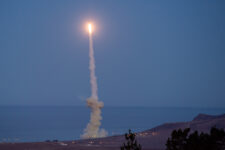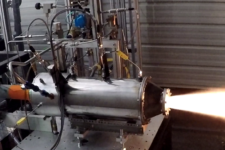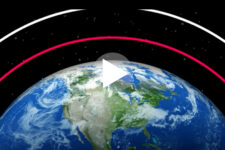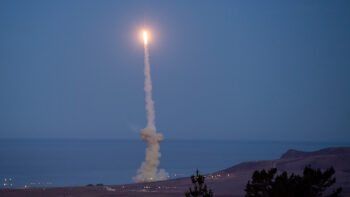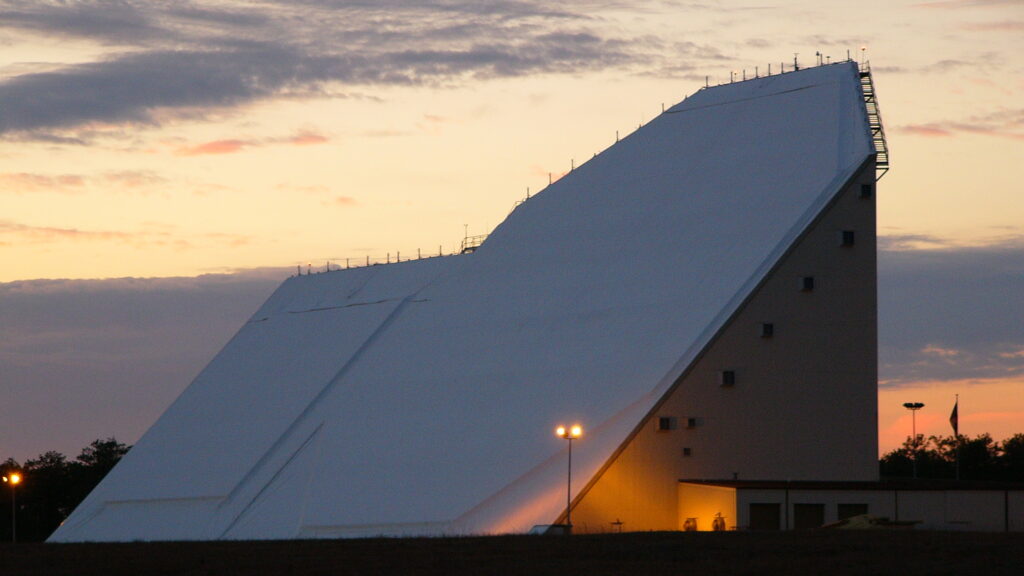
The 10-story radar, operated by the 20th Space Control Squadron on Eglin Air Force Base, Fla., tracks more than 22,000 orbiting satellites. (US Air Force photo)
WASHINGTON — The Defense Department’s far-future research organization has launched a project designed to incentivize operations of large numbers of satellites in low Earth orbit (LEO) to also use their constellations as a neighborhood watch — and provide the sensor data collected to DoD, and eventually the Commerce Department, “as a service.”
The new effort, called Space-domain Wide Area Tracking and Characterization or Space-WATCH, “seeks to leverage the growing number of commercial LEO constellations carrying low-cost but highly proliferated sensor technology to gain situational awareness throughout LEO at a fraction of the cost of the existing ground-based approaches,” according to a DARPA solicitation published last week.
The project has been designed in two parts, the first of which is the subject of the current solicitation that asks for interested vendors to respond by Wednesday.
“Technical Area 1, which we’re soliciting for now, is looking to find commercial satellite constellation operators that provide data in an as-a-service fashion to a system that will aggregate it. Technical Area 2, which we’re not soliciting for at the moment, will be the fusion center to aggregate all of that data,” Greg Kuperman, Space-WATCH program manager in DARPA’s Strategic Technology Office told Breaking Defense in email on Jan. 13.
DARPA believes that the service model also will “provide the opportunity for commercial LEO operators to capitalize on an additional revenue stream by providing on-orbit observations that will make the LEO environment safer for all participants,” the solicitation says.
Ultimately, the goal of the project is to “provide real-time persistent tracking of all objects in [LEO] so that when an anomalous action occurs, operators can be notified in a timely fashion, allowing them to plan and execute appropriate actions,” it explains.
National security space leaders are increasingly concerned not just about the skyrocketing number of satellites and dangerous space debris in LEO, but also about the adversary threats that might be lurking among all that clutter.
Currently, observation of LEO (between 100 and 2,000 kilometers above the Earth) primarily is done by ground-based radar and telescopes part of Space Command’s Space Surveillance Network, as well as increasingly those owned and operated by private companies looking to sell data and analysis. But those systems have a number of technical limitations as to how much they can “see,” and are not cheap.
“Space-WATCH seeks to overcome the limitations of these ground-based sensors and add capability and capacity by moving observations from the ground to constellations of satellites throughout LEO,” DARPA’s solicitation says.
Monitoring the heavens and providing spacecraft operators with warnings about potential collisions long has been a military mission. Since 2009, that has included providing commercial and foreign firms with warnings about potential on-orbit crashes. But the Trump administration back in 2018 tapped Commerce to take over the job of providing space situational awareness to non-military users, and the department has been struggling since that time to get its effort, which will rely largely on commercially provided data and analysis, off the ground.
As DoD shifts $50B in spending, can an old playbook protect legacy programs?
Running through potential winners and losers under Defense Secretary Pete Hegseth’s move to shift $50 billion towards different priorities in fiscal 2026.






